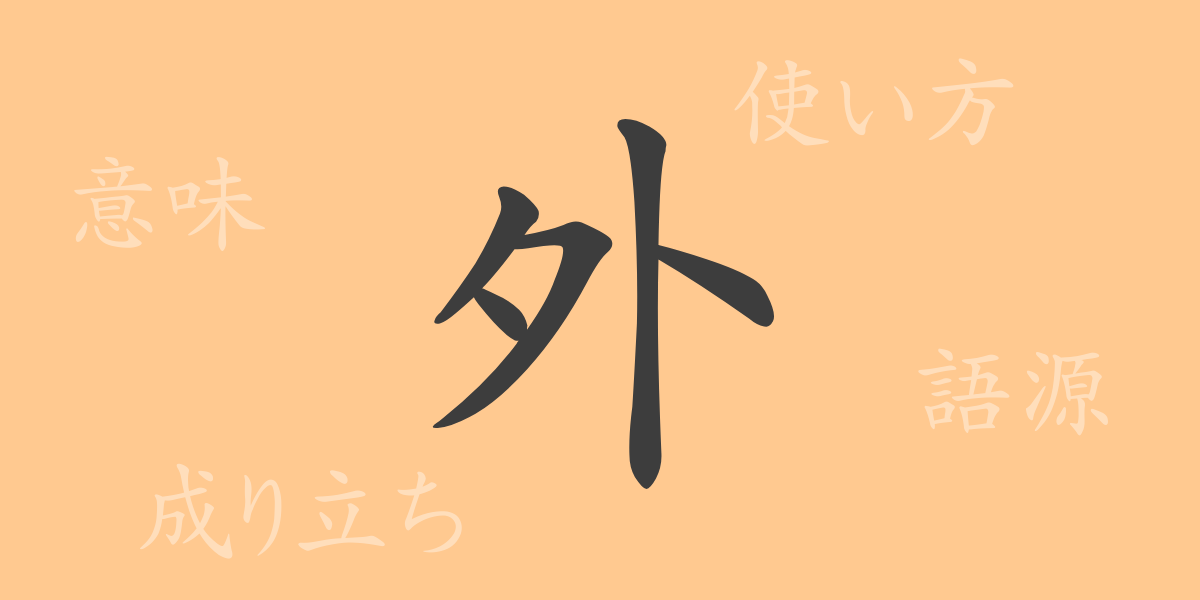In the Japanese language, there are many kanji characters that hold values beyond mere letters. Among them, “外” (Soto) is a commonly used kanji in everyday conversation as well as in business settings. In this article, we will delve into the origins, meanings, usage, and the impact of the kanji “外” (Soto) on our lives.
The Origin (Etymology) of 外
The kanji “外” (Soto) is said to have derived from ancient Chinese pictographs. Originally, it depicted the act of going beyond a wall to the outside, and its shape has evolved over time to its current form. This character, which indicates the area beyond a wall, has come to be used not only in its literal sense but also metaphorically.
Meaning and Usage of 外
The kanji “外” (Soto) is positioned as the antonym of “内” (uchi), meaning “a place that is not inside” or “outside the country.” It is also used to indicate actions such as “to deviate” or “to remove,” and is applied not only to physical spaces but also to abstract concepts. For example, “期待に外れる” (Kitai- ni -hazu-reru) refers to a result that differs from expectations.
Readings, Number of Strokes, and Radical of 外
The kanji “外” (Soto) is characterized by its simple yet powerful shape and meaning.
- Readings: The on’yomi (Sino-Japanese reading) is “がい” (Gai), and the kun’yomi (native Japanese readings) are “ほか” (Hoka), “そと” (Soto), “はず.す” (Hazu-su), “はず.れる” (hazureru), etc.
- Number of Strokes: 5 strokes
- Radical: 夕部 (Yuube)
Idioms, Phrases, and Proverbs Using 外 and Their Meanings
There are many idioms, phrases, and proverbs that include the kanji “外” (Soto), each reflecting the richness of the Japanese language. For example, “外交” (Gaikou) means negotiations between countries, and “外見” (Gaiken) refers to one’s appearance or looks. The proverb “口は災いの元” (Kuchi- wa -wazawa-i no- moto) contains the lesson that “words spoken out loud can lead to misfortune.”
Conclusion on 外
Each kanji character is imbued with history and culture through its shape and meaning. “外” (Soto) is no exception, and its usage is deeply rooted in the thoughts and actions of the Japanese people. Through this article, we hope to have aided in understanding the diverse aspects of the kanji “外” (Soto) and to have contributed to a deeper appreciation of the richness of Japanese expression.

























